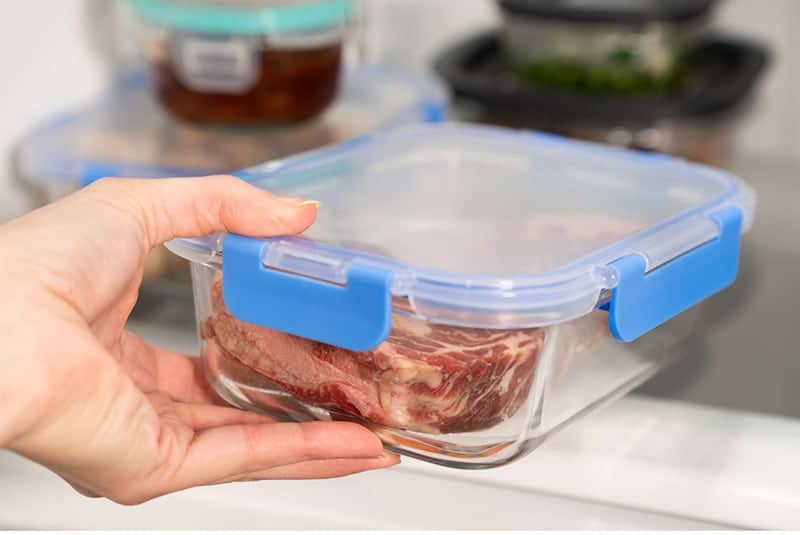October 3, 2022
Preparing and storing your grass fed beef safely is important for maintaining your beef’s highest quality. Knowing which containers to use, when to use them, and how long your grass fed beef can stay under refrigeration or freezing can be your secret ingredient in curating go-to weekly meals the entire family will find satisfying.
Preparing Grass Fed Beef Safely
We understand that preparing meals for your busy family can be tough sometimes. If you’ve got an amazing meal with grass fed beef planned, you’ll want to ensure you’re preparing it right. The first step is starting with clean hands, surfaces, and utensils. After all, you wouldn’t want to transfer any particles from a school project onto your family’s plates.
- The FDA recommends washing your hands with soap and warm water for at least 20 seconds before and after handling food.
- Any cutting boards, utensils, dishes, and counter tops used while preparing your grass fed beef should also be washed with hot soapy water afterwards. To ensure top-notch quality, utilize color-coded cutting boards or mats to prevent cross-contamination between your grass fed beef, other proteins, and produce items. This color-coded mat set is a great space-saving, food safety-minded option!
- Grass fed beef should be kept in the refrigerator until you’re ready to start your meal preparation. If you need to thaw your grass fed beef, remove from the freezer and thaw in the refrigerator for at least 24 hours.
Cooking Grass Fed Beef Safely
Once you’ve gotten everything washed and prepared, it’s time to get cooking. Remove your grass fed beef from the refrigerator and use a clean plate, serving tray, or pan to add spices, seasonings, or marinades. Keep raw grass fed beef separate from any produce or side dishes you’ll be serving.
- Adding a flavorful marinade to your grass fed beef steak or roast? Add the marinade and let it do its work under refrigeration.
- A high-quality meat thermometer should become a staple in your kitchen toolkit. Using a meat thermometer is essential to guaranteeing your grass fed beef has been cooked to the recommended internal temperature and help you ensure the desired doneness every time.
- The FDA recommends cooking grass fed beef roasts and steaks to a minimum internal temperature of 145oF and ground grass fed beef to a minimum internal temperature of 160o
- Resting is important! Not only does resting cooked grass fed beef roasts and steaks allow juices to distribute evenly, but the beef will also continue to finish cooking once removed from the heat source. Using a meat thermometer and resting your grass fed beef are vital to getting the perfect, safest cook every time.
Storing Grass Fed Beef Safely
You’ve prepared and cooked a satisfying meal. If there are leftovers, you’ll want to store them properly so they can be eaten again safely. It may be tempting to reach for a plastic storage bag or the aluminum foil, but these items won’t necessarily keep your cooked, leftover grass fed beef at its best.
- Use plastic or glass sealed containers to store your cooked grass fed beef. Shallow containers make reheating a breeze and help your grass fed beef cool to the right temperature more efficiently in the refrigerator. If you’re looking for a set to get started, this four-pack of glass containers will work great!
- According to the FDA, grass fed beef should be refrigerated or frozen within two hours of cooking. When temperatures hit 90oF or higher, store and refrigerate grass fed beef within one hour of cooking.
Fresh Grass Run Farms grass fed beef can be stored in the refrigerator for up to seven days after purchasing. However, it’s always best to consult the packaging for recommended best-by dates. Grass fed beef can also be frozen in the original, unopened packaging for up to 30 days after purchase if you bought extra for future use. Just remember to thaw it safely.
Safely serve up delicious, nutritious grass fed beef all year round. Find Grass Run Farms products at a retailer near you or shop online today.











